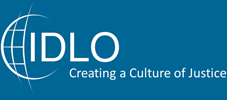Financing Women’s Justice Needs: Global Perspectives on Violence Against Women, and a Case Study on Uganda

Date of Publication:
Mercredi, mars 13, 2024
About This Publication:
This report underscores the interrelatedness of gender-responsive laws, justice policies, institutions and budgets – elements which are critical to ensuring justice for women.
Representing the third in a series, this report embarks upon this global desk review examining how much public financing is being invested to prevent and respond to violence against women.
The report was developed by the United Nations Entity for Gender Equality and the Empowerment of Women (UN Women), the United Nations Development Programme (UNDP), the International Development Law Organization (IDLO), the World Bank and Pathfinders for Peaceful, Just and Inclusive Societies.
The global analysis identifies eight major conclusions:
- The focus on addressing violence against women has grown and is consistent with the SDG agenda on Goals 5 and 16, and reflected in national development plans and strategies.
- Most countries now have laws in place that address violence against women, although the scope of the legislation varies.
- There is extensive evidence of justice gaps faced by women experiencing violence, especially demonstrated by the fact that low percentages of women report violence to the police.
- Very few countries publish fiscal data that enables public spending on justice for women experiencing violence. Currently, only one in four governments are meeting obligations under SDG Target 5.c.1.
- In those countries where quantification is possible, the amounts being spent are small – typically far below one per cent of the budget, and a tiny share of national income.
- The result is that women survivors face major justice gaps, across a range of areas – from non-reporting to police to delayed responses and lack of legal assistance – which means they are unable to access the allocated resources.
- There is positive evidence of increased allocations in development funding directed to addressing violence against women, and this tends to be better tracked and reported. This increase in development support for addressing violence against women stands in contrast to decreases in aid to the justice sector more generally.
- Women’s groups, public scrutiny and accountability mechanisms all play a critical role in seeking to hold governments to account for their responses, or lack thereof, to violence against women.
Theme(s):
Countries:


